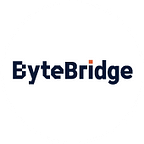Lane Annotation Case Study
With the era of automatic driving coming, the application scenarios requiring lane recognition are becoming more and more extensive, and the corresponding lane recognition technology is becoming more and more important.
The specific reasons are as follows: first, it covers a wide range of scenarios, and lane recognition exists in most application scenarios of automatic driving, which is an indispensable basic algorithm; Second, driving security. Lane recognition can accurately identify the road and ultimately help the machine to make decisions, which is also an important guarantee for driving safety.
Let’s look at an example of lane annotation.
Attribute of Color
White, yellow, green, blue, red, and others.
Attributes of Lane Definition
1. Left lane line of the main lane
2. Right lane line of the main lane
3. Left lane of the adjacent lane
4. Right lane line of the adjacent lane
5. Left lane line of other lanes
6. Right lane line of other lanes
7. Grid lines
8. Right side of grid lines
9. Left side of crossroads
10. Right side of crossroads
11. Others
Attributes of Lane Line Occlusion
1. No occlusion
2. Slight occlusion (less than 30%)
3. General occlusion (30%-70%)
4. Severe occlusion (70%+)
5. Others
Overall Requirements
1. Label the lane line with a polygon.
2. Label the lane lines within the driving area and label more points in the turning.
3. Dashed lines should be connected together with a line.
4. Need to label the center of double lines (such as double solid lines, double dashed lines, and solid-virtual or virtual-solid lines).
5. Crossroads intersection labeling: labeling the closed area and the intersected lines of the crossroads.
6. The invisible part of lane lines needs to be labeled with imagination.
7. The starting point of the lane should be labeled from the edge of the image.
8. When encountering the stop line, the lane line is only labeled till the stop line.
10. Pay attention to the damaged cracks and do not label them.
11. When labeling, the intersection needs to be connected.
12. When there are two-lane types together (solid line — dashed line/low curb — high curb), label them separately and closely.
Special Cases
1. Label the endpoint of the lane to the end of the image
2. Label/imagine lane lines in the urban road or under the barrier and label them as solid lines.
3. If the distortion of the lane line is caused by lens distortion, the labeler should mark the distorted lanes based on the actual situation (i.e. label them straight).
4. If lane lines at the toll station are not clear, only label the adjacent lane.
5. When the physical isolation on the expressway leads to partial occlusion of other lanes, only label the visible part.
6. Don’t label grid lines in urban areas. (Grid lines are mainly visible on highways).
7. The line below the urban road should be labeled and imagined.
8. Label/imagine a solid line under the isolation barrier.
9. Don’t label the horizontal line.
End
Outsource your data labeling tasks to ByteBridge, you can get high-quality ML training datasets cheaper and faster!
- Free Trial Without Credit Card: you can get your sample result in a fast turnaround, check the output, and give feedback directly to our project manager.
- 100% Human Validated
- Transparent & Standard Pricing: clear pricing is available(labor cost included)
